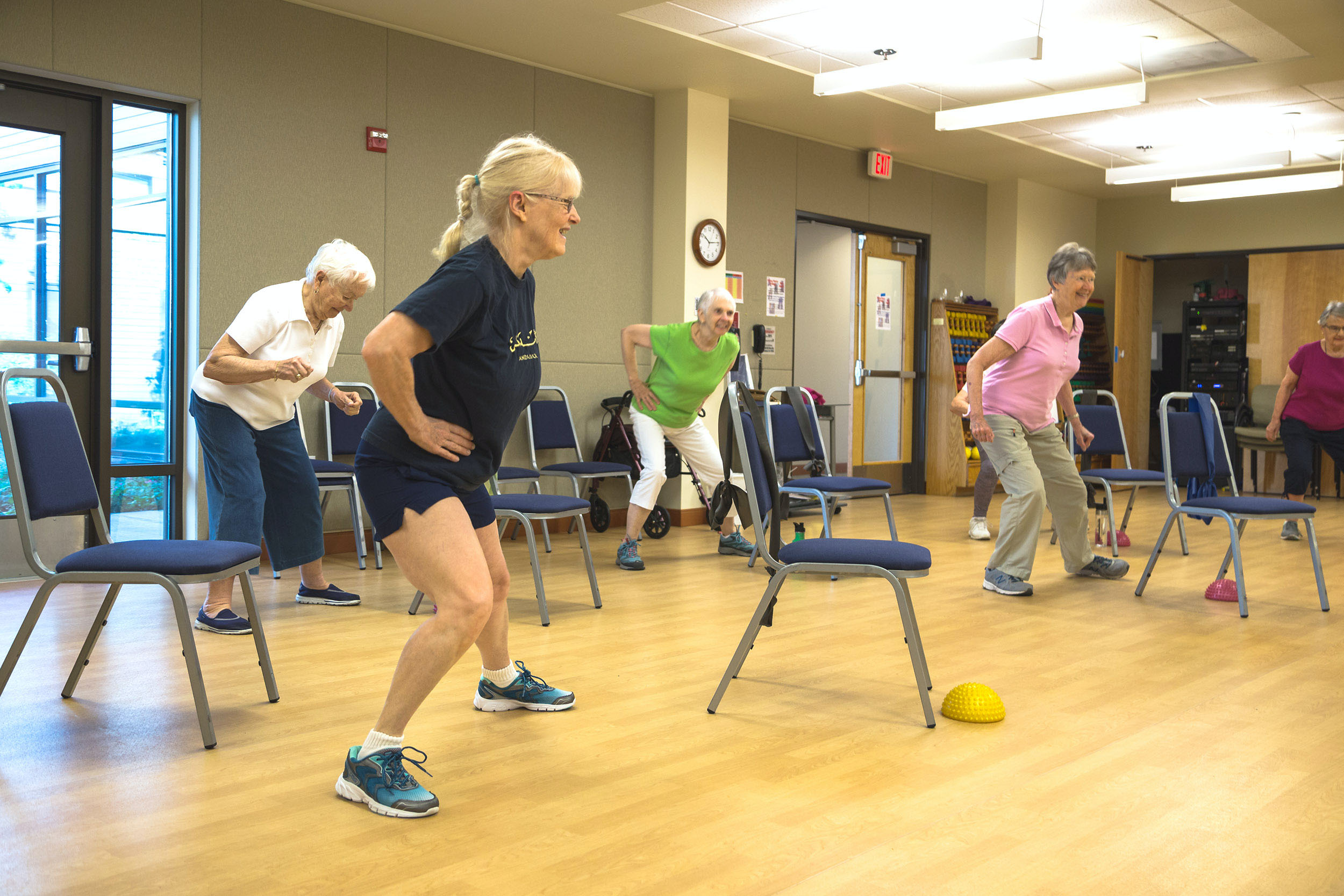Key to fitness after 60: Keep changing it up

Rachel Sandage knows what you’re thinking. She gets a similar reaction whenever she explains her job as Group Fitness Instructor at Willamette View, a senior living community south of downtown Portland.
“So…Chair Yoga, right?”
“At least you don’t have to work up a sweat.”
Please.
For one, fitness in this 55-plus community encompasses far more than chair yoga. Take Sandage’s Functional Fitness class, which draws residents in their 60s and 70s – and employees in their 30s and 40s. The class is so intense, she has to change out of her sweaty clothes afterward.
Below, Sandage, a software engineer-turned-certified-instructor by the Aerobics and Fitness Association of America, busts a few stereotypes and shares her tips for growing older, with strength.
WV: How does working out change as we age?
Sandage: Up to age 30, it’s easy to add muscle mass, bone density, and cardio fitness. From 30 to 60ish, the harder you work, the stronger and fitter you get (although bone density stops increasing easily at 30). After 60, and even more after 80, it’s a little like dealing with an old car: Things keep breaking and you really have to keep up with the maintenance.

WV: What are the best kinds of exercise to avoid setbacks and keep on track?
Sandage: Cardio exercise, plus building muscle and strength, are key after 60 – which is true for all age groups. Everything gets better with cardio – brain health, mental health, physical health.
But after 60, you also need to focus on strength training that mimics daily activities, rather than relying on gym machines. For example, do squats, which require balance and engage the stabilizing muscles, instead of using a leg-press machine, which does a lot of that work for you. Stay off the treadmill and instead take a walk or run outside. You’ll get the same cardio benefits, but you’ll have to adjust to uneven surfaces, which improves balance.
WV: What do people get wrong about working out as they get older?
Sandage: People are told, “Find an exercise routine and stick with it.” I disagree. I advise people to continuously change up their routine. Get a varied exercise “diet” that incorporates strength, flexibility, agility, and cardio. Then work out hard.

WV: Does the definition of “hard” change after a certain age?
Sandage: Exercise can very much slow down the decline. But to get those benefits, it’s important to work out to the point of discomfort and to remain uncomfortable as long as possible.
I work with 78-year-olds who are doing burpees. But I work with others who are often too quick to give up. As we age, some things do become out of reach, but there are modifications that can make the exercises accessible to everyone. After 60, after 70 and on up – you need to be pushing to “enough” over and over again. The benefits for body, brain, and spirit are huge.
WV: What’s something you didn’t expect about working with older adults?
Sandage: You can’t tell how old people are when they get above 60. How they’ve lived and their genetics have a huge impact on how people age. I’m thinking of two people I know, in their mid-90s: One is in a wheelchair. The other is a committed yoga student, always moving, able to go up and down from the floor.
Before I came to Willamette View, I had a lot of preconceptions about what kind of shape people need to be in to be able to exercise. But it turns out that if you start slow and work with your body, everybody can get stronger and fitter.